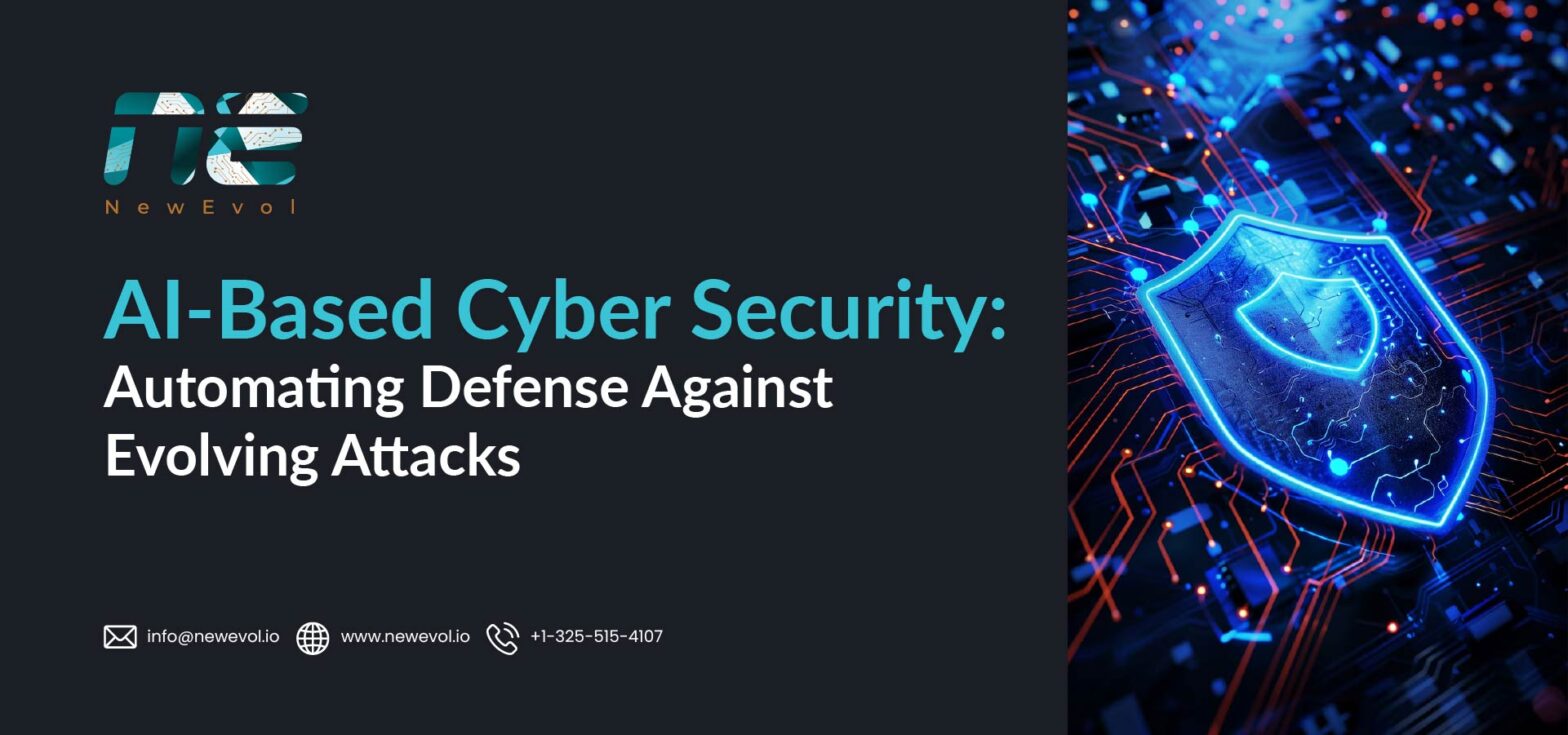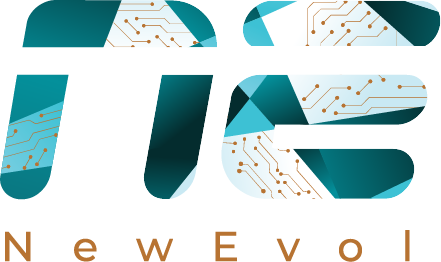AI-Based Cyber Security: Automating Defense Against Evolving Attacks

In 2025, cyber threats are evolving faster than ever. Traditional security measures struggle to keep up with increasingly sophisticated attacks, from AI-generated phishing scams to ransomware powered by machine learning. As businesses and government agencies face a constantly shifting threat landscape, relying solely on human-led defense is no longer enough.
The India AI in cybersecurity market earned USD 868.6 million in 2023 and is projected to grow at a CAGR of 36.6%, reaching USD 7.72 billion by 2030. Services lead the market, while hardware is the fastest-growing segment.
Enter AI-based cybersecurity. By leveraging artificial intelligence, organizations can detect threats in real time, predict attacks before they happen, and automate responses to minimize damage. This isn’t the future—it’s happening now, reshaping how we protect critical data, systems, and digital assets.
The Rise of AI-Powered Cyber Threats
As cybercriminals embrace artificial intelligence, attacks are becoming faster, smarter, and more difficult to detect. One growing trend is the use of deep-fakes AI-generated images, audio, or videos—to manipulate employees and executives into revealing sensitive information. These highly convincing attacks make traditional phishing attempts seem rudimentary.
Generative AI is also changing the game. Cybercriminals can now automatically craft malware, ransomware, or social engineering campaigns tailored to specific targets, making attacks far more effective and personalized.
Recent incidents highlight the danger: financial institutions in the U.S. reported a spike in AI-driven phishing attacks in early 2025, and healthcare providers faced sophisticated malware attacks exploiting vulnerabilities in connected medical devices. The speed and sophistication of these AI-powered threats underline the urgent need for defenses that can match them in intelligence and agility.
How AI Transforms Cyber Defense
AI is not just a tool for attackers—it’s also revolutionizing how organizations defend themselves. By integrating artificial intelligence into cybersecurity strategies, businesses can respond faster and more effectively to evolving threats.
- Predictive Threat Intelligence: Machine learning models analyze vast amounts of data to identify patterns and anticipate potential attacks before they occur. This proactive approach allows security teams to stay one step ahead of cybercriminals.
- Automated Incident Response: AI-driven systems can detect and respond to threats in real time, reducing the window of vulnerability. For example, when unusual activity is detected on a network, AI can automatically isolate affected systems, block malicious traffic, and notify security teams.
- Adaptive Security Measures: Unlike static defenses, AI continuously learns from new attacks. This adaptive capability ensures that cybersecurity measures evolve alongside the threat landscape, providing protection against emerging tactics that traditional systems might miss.
Real-World Applications of AI in Cybersecurity
AI-driven cybersecurity solutions are making a tangible impact across multiple sectors in the U.S., helping organizations protect critical data and operations.
- Financial Sector: Banks and payment processors use AI to detect fraudulent transactions in real time, flag unusual account activity, and prevent large-scale financial fraud. Machine learning models can spot subtle patterns that humans might miss, safeguarding both institutions and customers.
- Healthcare Industry: Hospitals and medical providers rely on AI to protect sensitive patient data and secure connected medical devices. AI monitors for abnormal behavior in networks and devices, helping prevent ransomware attacks and data breaches that could compromise patient care.
- Government Agencies: Federal and state agencies employ AI to strengthen national security, detect intrusion attempts, and defend critical infrastructure. Automated systems can quickly identify potential threats, assess their risk, and respond without delay, reducing exposure to sophisticated cyberattacks.
Across industries, AI is proving to be a crucial ally in staying ahead of increasingly sophisticated threats, combining speed, accuracy, and adaptability in ways human teams alone cannot achieve.
Challenges and Ethical Considerations
While AI brings powerful capabilities to cybersecurity, it also introduces new challenges that organizations must navigate carefully.
- Data Privacy: AI systems rely on analyzing large volumes of data to detect threats. This can raise concerns about how sensitive information is collected, stored, and processed. Ensuring compliance with regulations like HIPAA, GDPR, and CCPA is essential.
- Bias in AI Models: If AI is trained on incomplete or biased datasets, it may overlook certain threats or generate false positives, potentially leaving vulnerabilities unaddressed. Continuous monitoring and model validation are critical to maintaining accuracy.
- Over-Reliance on Automation: AI can respond to threats faster than humans, but it’s not infallible. Over-relying on automated systems without human oversight can create blind spots. Security teams must combine AI insights with expert judgment to ensure comprehensive protection.
Balancing the benefits of AI-driven defense with these ethical and operational considerations is key to building a secure, responsible cybersecurity strategy.
The Future of AI in Cybersecurity
The role of AI in cybersecurity is only set to expand, transforming how organizations protect themselves against ever-evolving threats.
The India cybersecurity market overall is valued at approximately USD 10.84 billion by 2025, forecast to hit USD 20.59 billion by 2032 with a CAGR of 9.6%. Growth drivers include rising adoption of integrated and AI-powered security solutions.
- Integration with Quantum Computing: As quantum computing advances, AI will leverage its processing power to analyze massive datasets faster, enabling near-instant threat detection and more sophisticated encryption methods.
- Collaborative Defense Systems: Future AI systems will increasingly collaborate across organizations and industries, sharing threat intelligence in real time to create a collective defense network that can respond to attacks more efficiently.
- Continuous Evolution: Cyber threats will continue to evolve, and so must AI. Organizations that invest in ongoing research, model updates, and adaptive systems will be best positioned to stay ahead of attackers, ensuring that defense strategies remain proactive rather than reactive.
By embracing AI as a strategic component of cybersecurity, businesses can not only respond to current threats but also prepare for the challenges of tomorrow.
Conclusion
AI is no longer just a futuristic concept in cybersecurity—it’s an essential tool for defending against today’s sophisticated attacks. By automating threat detection, enabling predictive intelligence, and responding to incidents in real time, AI empowers organizations to stay one step ahead of cybercriminals.
For businesses in the U.S. looking to strengthen their digital defenses, investing in AI-driven cybersecurity solutions is no longer optional—it’s critical. Partnering with experts like NewEvol ensures that your organization can harness the full power of AI, protect sensitive data, and build a resilient security posture that adapts to evolving threats.
FAQs
1: How can AI defend against cyber attacks?
AI detects unusual patterns, predicts potential threats, and automates responses to stop attacks in real time.
2: How will AI be used in cybersecurity?
AI will continue to enhance threat detection, automate incident response, and provide adaptive defenses against evolving cyber threats.
3: What is the evolution of AI in cybersecurity?
AI has progressed from basic anomaly detection to predictive threat intelligence, autonomous response, and collaborative defense systems.
4: How is AI used in security and defense?
AI monitors networks, endpoints, and systems; identifies vulnerabilities; prevents breaches; and continuously adapts to new attack methods.

